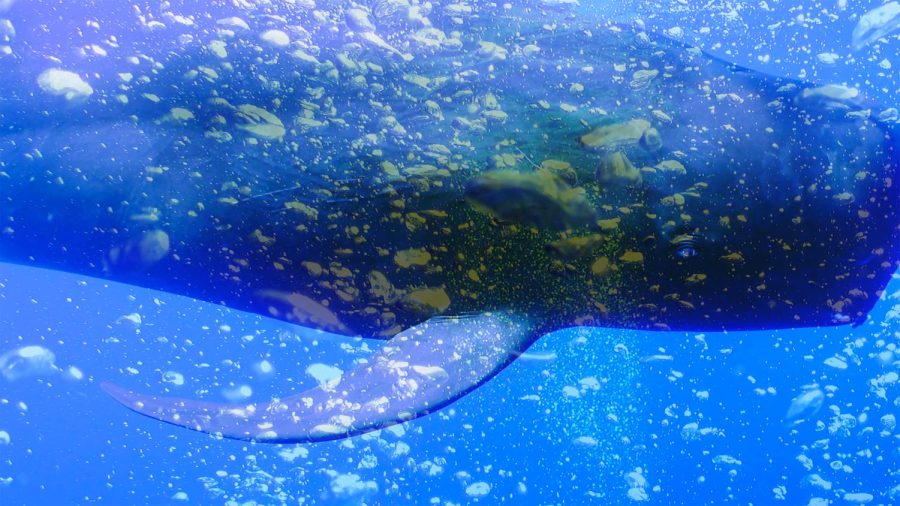The Mishkin Gallery presents ‘Who Speaks for the Oceans?’
Miho Hatori, Do Whales Dream of Electric Human? ( video still), 2022. Video installation. Courtesy the artist
September 25, 2022
The Mishkin Gallery of Baruch College debuted its latest exhibition, “Who Speaks for the Oceans?,” running from Sept. 1 to Dec. 9.
The exhibition analyzes the intellectual and historical information that formed our knowledge of whales and other marine animals. Funding was provided by the Etant donnés program of the Villa Albertine and FACE Foundation, in partnership with Cultural Services of the French Embassy in the U.S.
The 15 featured multimedia works were co-curated by Mishkin Gallery director Alaina Claire Feldman and distinguished professor of Biology and Environmental Sciences David Gruber.
“I think it’s one of the most interesting exhibits related to the ocean that has ever been assembled and it’s here at Baruch College,” Gruber said. “It’s world-class.”
Described by Feldman as an “extensive collaboration between the disciplines of art and science,” the exhibition takes place following the spring 2022 Feit Seminar of the same name taught by both co-curators. Similar to discussions held in the classroom, the exhibit raises awareness about a whale’s audible response to the effects of humans on the natural world.
Upon entering the exhibit, visitors are greeted by the “whale song,” an audio clip playing throughout the exhibit.
According to Feldman, preliminary research for the exhibition, dating back to before the COVID-19 pandemic, similarly began with audio with the “Songs of the Humpback Whale,” the 1970 album by marine environmentalist Roger Payne. Payne’s album, which captured whale sounds for the first time, radically changed perceptions of whales at the time and eventually led to a ban on commercial whaling in 1982.
“We found this album has been very inspirational in art that can change public discourse,” Feldman said. “We hope this exhibition can maybe change some people’s minds or spark some ideas but ultimately create empathy for the non-human and empathy for care of our environments.”
Merging older works that predate our current understandings of aquatic life and contemporary pieces, the exhibit encapsulates the work of several artists speaking on behalf of the sea creatures.
American video and performance artist Joan Jonas who, according to Feldman and Gruber, found a spot in the Feit Seminar, attending the class regularly, contributed two recent works. Her pieces include “vibrant red drawings of individual sea creatures in the artist’s signature calligraphic style.”
Myrlande Constant’s “La Sirene et La Baleine” ca. 2000, applies these themes through a sequined tapestry depicting the siren Mami Wata, a half-woman, half-fish symbol in Haitian Vodou representing good fortune and fertility. Next to the siren is a water spirit, La Baleine. This tapestry illustrates the relationship between the ocean, land, animals and humans.
Other artists showcased in the exhibit include Ant Farm, Ursula Biemann, Else Bostelmann, Jacques Cousteau, Louis Malle, Pia Dehne, Will E. Jackson, Marguerite Humeau, Dominique Knowles, Josèfa Ntjam, Chris Marker and Mario Ruspoli.
Throughout the course of the exhibition, live performances that include workshops and musical demonstrations will take place at the gallery. The first performance on Oct. 13 will feature a new video projection by Miho Hatori commissioned for the exhibit titled “Do Whales Dream of Electric Human?”
The final performance on Dec. 1 will be led by Baruch students and include attendees participating in an echolocation interactive across the gallery. This collaborative program is inspired by the work of the late experimental composer Alvin Lucier.
“We think that students at Baruch are at the forefront of the action and the thinking around climate change,” Feldman said. “We really wanted students and artists to kind of come together and find inspiration for how we can move forward and care for our environment.”








